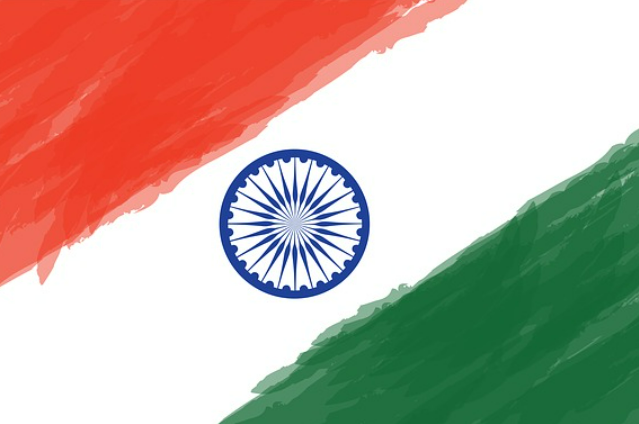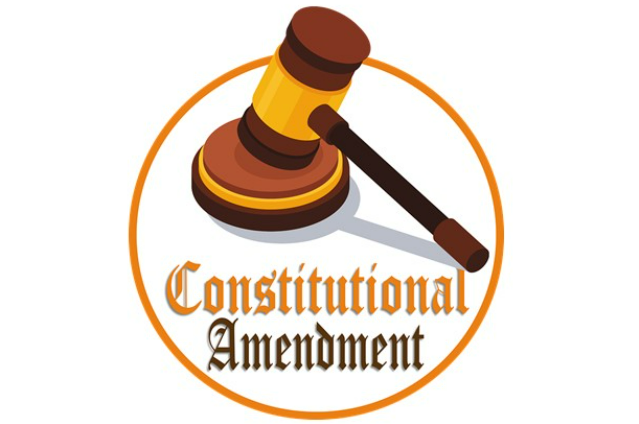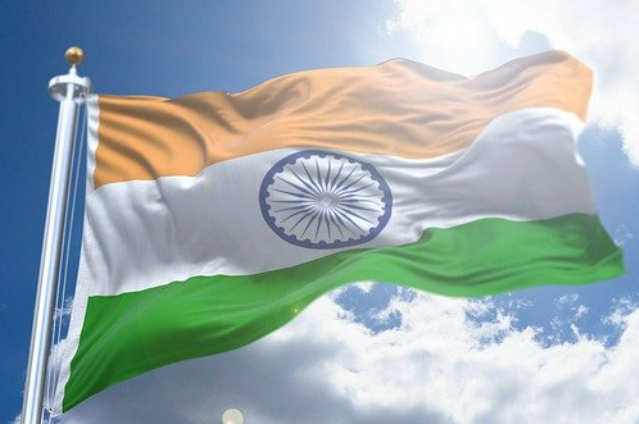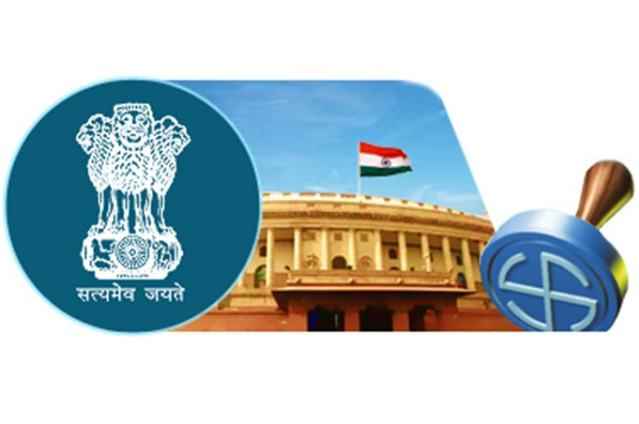Introduction
“However good a constitution may be, if those who are implementing it are not good, it will prove to be bad. However bad a constitution may be, if those implementing it are good, it will prove to be good”. - Dr BR Ambedkar

On January 26, 1950, the Indian Constitution went into action. The Constitution was the lengthiest national constitution ever implemented at the moment of its implementation. It had 395 Articles, 8 Schedules, and was about 145,000 words long. Over the course of 11 sessions and 167 days, spanning two years and eleven months, the constitution makers discussed each and every provision of the Constitution.
Every advanced legal system has a judicial branch that decides on the rights and duties of the countries people. The judges' earlier decisions were influenced by traditions and their own sense of fairness. With the development of civilization, legislation has become the primary source of law, and judges now make decisions based on it. The judges still use their creativity at this point. When it comes to interpreting the law or covering in any gaps left by the legislation, judges to a certain level rely on their understanding of justice and injustice.

The Supreme Court of India was established by the Indian Constitution to serve as the highest court in the land and to uphold the interests of Indian citizens. So it is for this purpose that the Court has been carrying out its duty as the Guardian of the Constitution. The Supreme Court was presented with a number of challenges, to which it most fearlessly commented. The Court issued a number of judgments that, in the majority of cases, tended to change the previously applicable laws. The Court also rejected many previous related laws that the Inferior Courts had basically decided.
Part of Indian Constitution in Magna Carta
The Magna Carta, which was penned in mediaeval Latin on June 15, almost 800 years ago, on paper, might be thought of as the foundation of personal rights in India. It was important then, and it is important now. Many nations currently enjoy freedom thanks solely to a document from the Middle Ages. This is especially true for India, as the constitution was written in the spirit of the document.
The preamble of the Constitution, in which the People of India officially agreed to establish India as a sovereign, socialist, secular, and democratic republic and to provide for themselves justice, liberty, equality, and fraternity, serves as the foundation for Part III of the Constitution. These liberties are sacred, unassignable, and untouchable. In accordance with international patterns of human rights interpretation, the Apex Court of India has repeatedly expanded the ambit of Fundamental Rights. Notable cases include the legalisation of Section 497 of the Indian Penal Code and the acceptance of voluntary LGBTQ relations.
The Fundamental Rights are not absolute, though. While the State has a responsibility to uphold people's Fundamental Rights, it also has a responsibility to maintain social order. In order to prevent abuse of the Fundamental Rights, Part III specifically places some restrictions on them. In each situation, the issue of balancing the competing demands of the individual and the society comes up. When two parties' fundamental rights clash, the right that promotes public morality should exercise power.
Judgments that gave a newer perspective
There have been several judgments that have given a newer perspective to Indian Constitutional Law and ensured in making Indian an egalitarian society. Thus, accounting for access to equal opportunities in every sphere of life.
Golaknath v. State of Punjab (1967)
Two brothers named Henry and William Golaknath held about "500 acres of farmland" in Jalandhar, Punjab. The Golaknath brothers were informed that they could only own 30 acres of property under the recently passed Punjab security and land tenure legislation, and that some of the remaining land would be distributed to tenants and acquired by the authorities as extra. The Punjab government 's measures were disputed by the Golaknath family, and the issue eventually made it to the Supreme Court in 1965.
- Decision:
The ruling rejected a previous ruling by the Supreme Court that had affirmed Parliament's authority to change all provisions of the Constitution, which include Part III, that is dedicated to fundamental rights. After the ruling, Parliament lacked the authority to constrain fundamental rights. By a sharp 6:5 vote, the Supreme Court ruled that a constitutional amendment made according to Article 368 of the Constitution qualified as a "law" under Article 13(3) of the Constitution. The majority of people did not see any distinction between the parliament's regular legislative authority and its underlying constitutional authority to modify the Constitution.

A rolling position in Indian history was the Golaknath trial. The unfortunate timing of the case's resolution. The "darkest decade" in the nation's history was when it took place. With this choice, the parliament's dictatorship ended. The majority court was worried that the consequence of the case would harm the constitution. By introducing laws that restricted the legislature's authority, this decision prevented the parliament from violating the fundamental rights of citizens. The trial was centred on protecting fundamental rights that no government has the authority to restrict. The Golaknath case supported the "rule of law" by proving that lawmakers are not above the law.
Kesavananda Bharati v. State of Kerala (1973)
The case of Kesavananda Bharati v. State of Kerala (Kesavananda Bharati) is arguably the Supreme Court of India's most well-known fundamental ruling (Supreme Court). While concluding that there is no asserted restriction on Parliament's capacity to alter the Constitution, it was held that no modification could violate that structure's fundamental principles (known as the "Basic Structure Doctrine"). Additionally, it guaranteed the Supreme Court's competence to examine decisions and, as a result, its authority over all constitutional issues.
- Facts of the case:
Kesavananda Bharati comprised of 6 different writ petitions filed by a series of petitions which supported the people owning Properties , landowners countered to land ceiling regulations, Maharashtra sugar corporations, coal mining companies, and royal rulers trying to maintain their previous entitlements. According to the Golak Nath case ruling, the writ petitions challenged whether there were any restrictions on Parliament's ability to change the Constitution, especially the fundamental rights.

The Land Reforms Amendment Act, that was passed by the Kerala State government in 1969, gave the government the authority to purchase most of the land purchased by the Edneer Mutt, whose leader was Keshav Nand Bharti. On March 21, 1970, Kesavananda Bharti submitted a writ petition to the Supreme Court under Article 32 of the Indian Constitution to implement the rights granted to him by Articles 25 and 26 of the Indian Constitution, which grant the freedom to practice and continue to spread religion, the right to administer religious affairs, the right to equality under Article 14, the freedom to acquire property under Article 19(1)(f), and the Compulsory Acquisition of Property provision of Article 31.
The Kerala government approved the Kerala Land Reforms Amendment Act 1971 while the court was still hearing the petition.
- Judgment Day:
In the Keshwanand Bharti Case of 1973, the thirteen-judge Supreme Court bench ruled 7:6 in favour of the Parliament's right to change any constitutional provision, provided that doing so does not go against the Constitution's fundamental principles. The minority bench did not accept that some sections are basic while authoring divergent views. Additionally, they were apprehensive to give Parliament entire and unrestricted power to modify the Constitution. The top court affirmed the majority of the 24th Constitutional Amendment Act of 1971, but deemed the first and second portions of the 25th Constitutional Amendment Act of 1972 to be intra and ultra vires, respectively.
The court ruled that neither the Parliament nor the Supreme Court has the power to undermine the Basic Structure of the Constitution or to repeal the responsibility to establish a welfare state and a fair and equitable society by applying social construction and weighing the concerns of both parties. Thus, in the Kesavananda case, the Basic Structure Doctrine was developed, which meant that even though the Parliament has the power to modify the constitution And bill of rights, they should do so without contradicting the elements that are so essential to the country's constitution that it would be meaningless without them.
Vishaka vs. the State of Rajasthan, (1997)
As there was no law offering provisions to check the terror of sexual harassment of employed women until the POSH Act came into force in 2013 and Section 354 A, IPC was also incorporated in the same year as a result of the Justice Verma Committee's suggestions, the Supreme Court first recognised the need for regulations delivering for the preventative provisions of workplace sexual harassment in Vishaka v. State of Rajasthan (1997 6 SCC 241).

As such Vishakha guidelines were established by the Supreme Court to combat sexual harassment of women at work. The POSH Act, Section 354 A, and these guidelines all have this basic flaw: they are not gender-neutral and solely take into account women as victims. In Navtej Singh Johar v. U.O.I., the Supreme Court declared that Section 377 of the IPC, that penalises unnatural offences like sodomy, is unconstitutional by narrowing the definition of "unnatural."Sodomy without consent is still punishable, but it is difficult to show. By doing this, the discriminatory portion of this Section was read further down, which was progressive, but no further protection was included to shield other genders from similar heinous crimes.
Shreya Singhal v. Union of India (2015)

The whole basis of Section 66A of the Information Technology Act of 2000 was declared unlawful by the Supreme Court of India. The petitioners claimed that Section 66A was unconstitutionally ambiguous and that the limitations allowed by Article 19(2) of the Indian Constitution went beyond the protections it was designed to provide against nuisance, discomfort, danger, interruption, insult, harm, and criminal intimidation. The Court concluded that there were no justifiable exceptional cases to the enjoyment of the right to freedom of expression that extended to the restriction against the publication of material through a computer system or a communication device with the intent to annoy, inconvenience, or insult. Further, it was determined that the provision's scope was excessively broad and ambiguous since it did not define phrases like inconvenience or annoyance, which might restrict "a very large amount of protected and innocent speech."
Justice K.S. Puttaswamy vs. Union of India (2017)
The Supreme Court's unanimous decision in Justice KS Puttaswamy v. UOI (2017) and other pertinent cases have confirmed that the Indian Constitution unquestionably protects each person's right to privacy and that it is an integral part of Articles 14, 19, and 21. The MP Sharma v. Satish Chandra decision by an 8-judge bench in 1954 and the other Kharak Singh v. State of Uttar Pradesh decision by 6 judges in 1962 were both overturned by this ruling by a 9-judge bench. According to the rulings in both of these decisions, the right to privacy is not a fundamental right and is not guaranteed by the Constitution.
Aadhaar's constitutional legality was maintained by the SC in Justice KS Puttaswamy's aadhaar decision as well since it passed the three-part test (or triple test in Maneka Gandhi's case). In relation to Aadhaar, the three-part Puttaswamy test is used to determine if any government activity violates the right to privacy. The Three requirements that must be fulfilled are first that legality is a term used to describe the existence of law. Need that is expressed in perspective of an acceptable state goal. Second, is that in this situation, it was necessary to use Aadhaar to distribute government benefits and subsidies to underprivileged and marginalised citizens. Third, is that Proportionality provides a necessary connection between the goals and the strategies used to accomplish them.
Although there are some legitimate boundaries, the right to privacy is a fundamental right. The Supreme Court affirmed that the right to privacy is a fundamental freedom that can be inferred from Articles 14, 19, and 21 of the Indian Constitution without being expressly stated in the Constitution. It is a fundamental natural right that coexists with the right to life and liberty. Any State intervention that violates the right to privacy is liable to judicial examination because it is an unalienable and basic right.
Navtej Singh Johar vs. Union of India (2018)
The main concern in this case was whether Section 377 of the IPC, that concerned with "unnatural offences" and made "carnal intercourse against the order of nature" illegal, was constitutionally legitimate insofar as it affected consenting same-sex partnerships. The Delhi High Court declared Section 377 to be unconstitutional in 2009 in the Naz Foundation case, but the Supreme Court overturned that decision in Suresh Kumar Koushal. In 2016, Navtej Singh Johar, the petitioner, filed a writ petition before a three-judge Supreme Court bench questioning the legality of Section 377 and the court's ruling in Suresh Kumar Koushal. Due to the seriousness of the situation, the case was sent to the five judge bench.
- Decision in the case:
The Supreme Court pointed out that the Suresh Kumar Koushal decision did not distinguish among consensual and non-consensual sexual activities between adults and instead focused on the small minority justification to deny the LGBT people their fundamental rights. A difference "needs to be drawn between consensual relationships of adults in private, whether they are of a heterosexual or homosexual nature," the Court stated in this reference. Additionally, crimes including sodomy, bestiality, and non-consensual partnerships could not be classed among adult consensual relationships.
In addition, the Court evaluated Section 377's validity in light of the ideas outlined in Articles 14, 15, 19 and 21. The Court cited the Puttaswamy decision, which acknowledged the interlinkages with both privacy and security and also that the right to sexual orientation was an inherent part of the fundamental right to privacy, to restate that sexual orientation and gender identity was an essential component of an individual 's character. The NALSA decision, which provided equal protection under the law to transgender people, also played a big role.
Joseph Shine vs. Union of India (2019)
A non-resident Keralite named Joseph Shine initiated a public interest litigation in accordance with Article 32 of the Constitution. The petition questioned whether Section 497 of the IPC read together with Section 198(2) of the Criminal Procedure Code, 1973, that defined adultery as a crime. The IPC's Section 497 made adultery a crime by holding a man responsible for having sex with another man's wife. Adultery carried a five-year maximum sentence for punishment. However, women were not subject to prosecution. When a married man had sex with an unmarried lady, Section 497 of the IPC was not relevant.
The procedure for charging offences committed in violation of Sections 497 and 498 IPC was outlined in Section 198(2) of the CrPC. Only the husband may bring a charge for the offence of adultery, according to Section 198(2) CrPC. The Court examined the accuracy of earlier rulings that had affirmed Section 497's constitutional validity, including Prevedents in Yusuf Abdul Aziz, Sowmithri Vishnu, and V. Revathi matters.
- Judgment:
Upon reading Section 497 of the IPC, the three-judge bench noted that it appears to provide protection to the wife by considering her as a victim and sent the case to a five-judge Constitution Bench. The fact that only one of them is held accountable for a crime although both of them do it is equally important to notice. Normally, gender neutrality is a basis for criminal law, but this section appears to be lacking this principle.

Photo by Tingey Injury Law Firm on Unsplash
The Center submitted an affidavit on July 11 in which it said that downplaying adultery in any way would affect the "sanctity of marriage." The case was first heard by the five-judge bench on August 1st, 2018. The Bench issued its ruling decriminalising adultery on September 27, 2018.
Human Rights and Constitution of India
Every person has a right to some fundamental freedoms known as human rights. Due to the common knowledge of the Indian Constitution, human rights are protected in India. However, there are still many people who violate it. However, compared to ancient, mediaeval, and modern society, the occurrence of the violation has significantly decreased in current times.

The universal declaration of human rights and the United Nations serve as the guardians of human rights in modern times. Every citizen in India is guaranteed to fundamental rights, which are codified in part iii of the constitution. Now that human rights have been established, the only issue that can emerge is their implementation in every region of the country. The Indian Constitution's preamble includes provisions on human rights as well. There are also the fundamental rights, which serve as the foundation upon which all other rights are built. The origin of human rights can also be found in directive principles.

The Part 4 of the Indian constitution contains the guiding foundations of state. These are the directives that the drafters of the constitution provided to the government to support them in running the country. These guiding principles support the idea of human rights by outlining additional rights that the drafters of a democratic nation's constitution considered vital for its citizens. According to this, all of our country's residents should have access to legal representation and adequate means of subsistence. There are other additional guiding principles that can aid in the actual ground-level enforcement of human rights in India.
Conclusion
While the general guidelines to be followed in the resolution of disputes are set forth in statutes and other legislative acts, the courts are the last determiner of how such laws should be interpreted. When a comparable or same legal subject is addressed before a court, the precedents doctrine makes the court's rulings usually binding on the lower courts. The court must maintain a balance between the necessity for uniformity and certainty and the advantages of expanding and developing the law. The doctrine of precedents has considerable value because it offers assurance. However, precedents are seen as being legally binding, which has the potential to impede the growth of law that is required to keep up with societal changes.
. . .
References:
- www.news18.com
- www.constitutionofindia.net
- misc.manupatra.in/images
- papers.ssrn.com
- www.mondaq.com
- lawsisto.com/legalnewsread
- lawcorner.in
- www.jstor.org
- www.thehindu.com
- www.governancenow.com
- unacademy.com/content/upsc
- lawcorner.in
- lawplanet.in/kesavananda
- www.probono-india.in
- nja.gov.in/Concluded_Programmes
- www.mondaq.com
- corporate.cyrilamarchandblogs.com
- lawplanet.in/kesavananda
- blog.finology.in/constitutional-developments
- globalfreedomofexpression.columbia.edu
- blog.finology.in/constitutional-developments
- privacylibrary.ccgnlud.org
- www.scobserver.in


